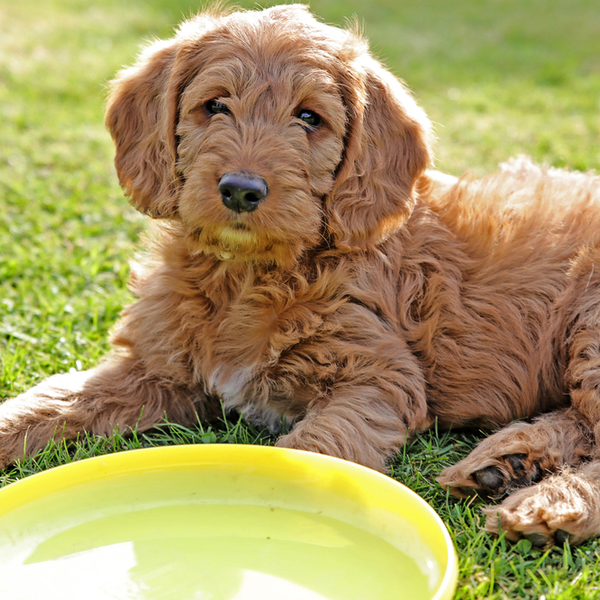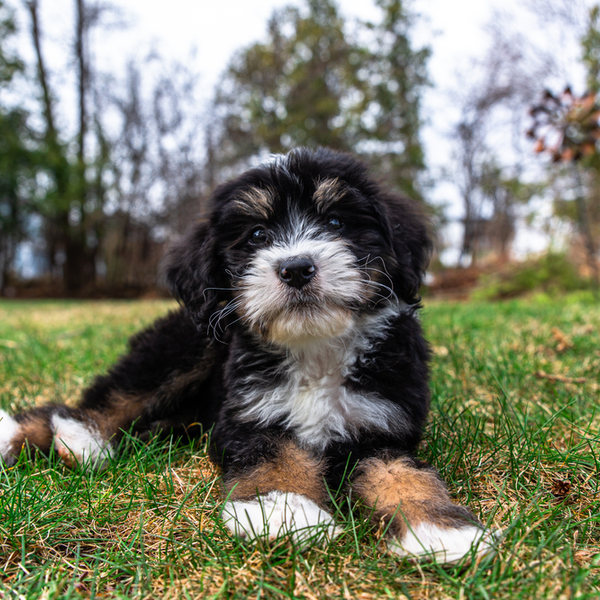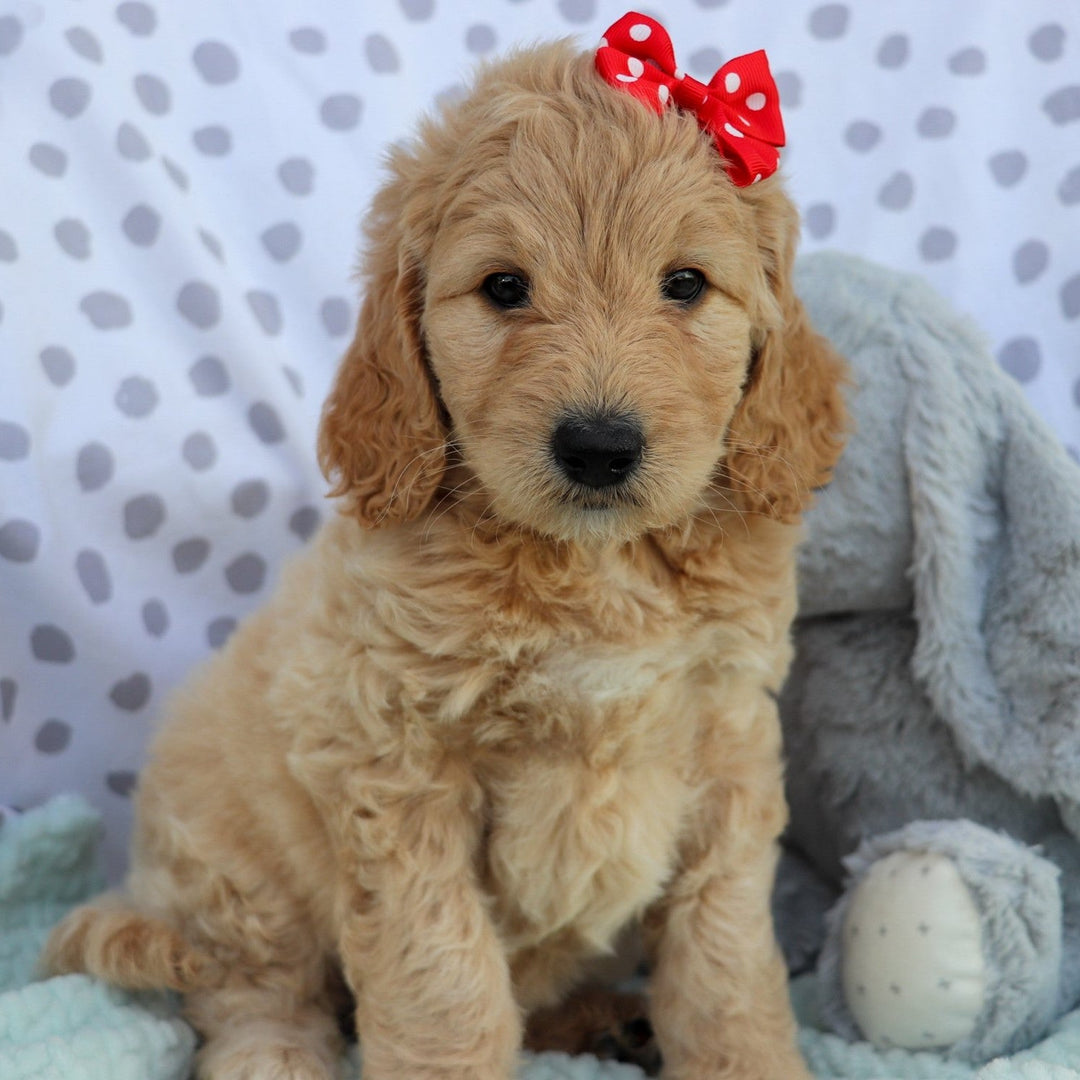
MINIATURE NEWFYPOO PUPPIES FOR SALE
Gentle. Protective.
Also called Newdle, Newfydoodle, Newfydoo, Newfoundlandpoo, Newfoundlandoodle, or Poofoundland, the Newfypoo is a cross between a Newfoundland and a Miniature or Toy Poodle. The breed is known for its high intelligence and protective nature. They have a lot of energy and will love to burn it off with walks, active games like fetch, and interesting play toys. They are outgoing and tend to get along well with other pets.
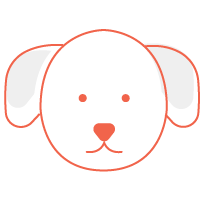
Temperament
Because they’re so smart, Newfypoos need mental stimulation along with a regular exercise regimen.
You may also find that your Newfypoo needs companionship. Both parent breeds are oriented to companionship, so they come by this naturally. They can become loud, anxious, and destructive if they’re away from you for too long.
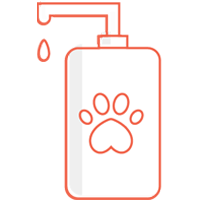
Appearance
They have oval-shaped small- to medium-sized eyes that are typically dark brown to amber (although pups with strong Poodle genes may have lighter eyes).
Most will have a long, straight, broad muzzle (although pups with strong Poodle genes may have a thinner, more streamlined head and tapered muzzle).
Newfypoos usually have a dense, curly coat that may have a single layer or a double layer.

Exercise
Newfypoos love walking and jogging, and they can be talented in tracking, truffle hunting, and water sports of all kinds. In fact, swimming is great for building muscle and increasing cardiovascular endurance without stressing the joints.
We recommend 60 minutes of activity a day and about 12 miles of walking a week.
The Newfypoo is a cross between the Poodle and the Newfoundland and was created in the last 20 years or so. Although its history isn’t long, its parent breeds are well documented.
Poodles are highly intelligent and multi-talented, and they originated in Germany where they were bred to find and retrieve waterfowl. In fact, they were called “Pudlehund” from the German words “pudle,” which means to splash about, and “hund,” which means dog. As they moved about Europe, they gained a reputation for being fast learners who were easy to train. They’ve worked as circus dogs, service dogs, therapy dogs, and even police and military dogs on occasion.
Newfoundlands were originally bred as working dogs and companions to Newfoundland fishermen. They were known as Greater St. John’s dogs, and they assisted fishermen by retrieving ropes, dragging in nets of fish, and even rescuing survivors of shipwrecks. They gained popularity because of their intimidating size and good nature. It didn’t take long for people to train them in a variety of jobs, from pulling wagons and carts to powering blacksmiths’ bellows to keeping guard.
Major health concerns to be aware of:
- Cataracts
- Canine Hip Dysplasia
- Sebaceous Adenitis
- Subaortic Stenosis
- Gastric Dilation Volvulus (GDV) or
- Bloat
Minor health concerns to be aware of:
- Ectropion
- Cherry Eye
- Retinal Dysplasia
- Pemphigus Glaucoma
- Progressive Retinal Atrophy (PRA)
- Dilated Cardiomyopathy (DCM)
- Mitral Valve Dysplasia
Newfypoos only need to be bathed once every two or three months to keep them looking and smelling good. However, the coats of both parent breeds can require frequent maintenance, and you should expect to attend to your Newfypoo’s coat daily. Brush and comb their coat daily to remove loose hair and debris and prevent mats. Your pup may also require frequent trimming or clipping. Your Newfypoo also needs you to check their ears regularly to keep them clean, dry, and free of infection.
This breed is prone to bloat, which is a disorder that can be life-threatening. You can minimize the chances of experiencing this condition by serving your pup several smaller meals a day rather than one or two large meals. Specialized food bowls that force your pup to slow their speed of eating can also help.



